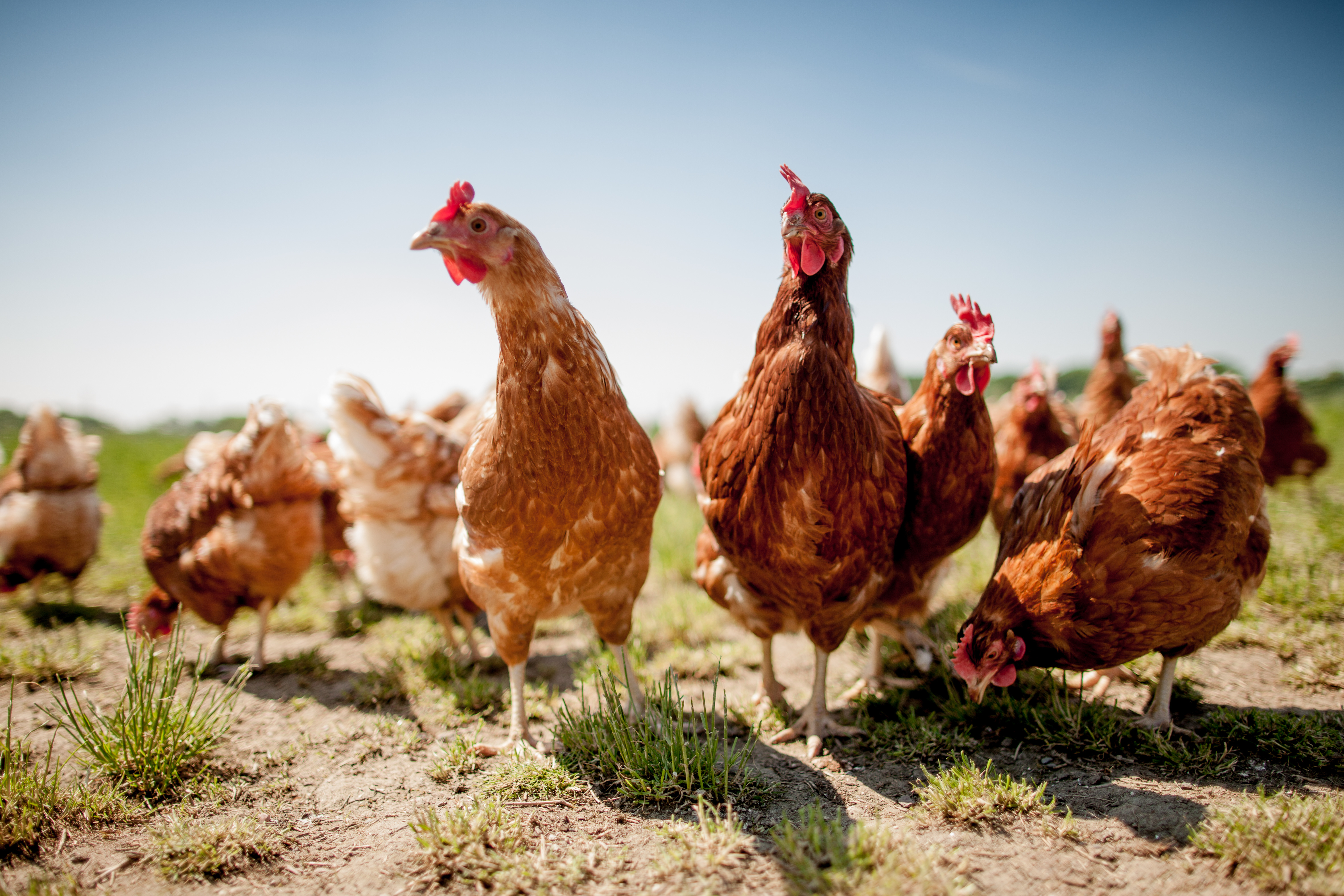



How to help your chickens beat the heat in summer
Chickens can cope with a great deal – but rising summer temperatures can increase risk of death by heat exhaustion and suffocation. Here’s how to help your flock stay safe in hot weatherLast year we experienced record-breaking temperatures across the UK, peaking in Faversham, Kent at 35.3oC. With the expected rise in global temperatures those sweltering summer months could be beyond our current means of coping with the heat. Every summer we experience days when just spending a few minutes in a poultry house feels unbearable, and for many broilers reaching the end of the cycle it is – with mortality soaring. Thankfully the poultry industry has made a great deal of progress in the area of ventilation and cooling. As chickens are reared in hot countries such as Saudi Arabia, the technology to deal with temperatures in excess of 40oC has already been well tested.
Chickens, in general, can cope with high temperatures. The domestic fowl has a healthy body temperature of between 40°C and 41.7oC, chicks under three weeks of age being at the lower end. With the bird’s metabolism being quite high, its ability to lose heat is imperative and it does this by radiation, conduction and the evaporation of water. Chicks, being small, have a high surface area in comparison to their body mass, which means heat is lost from the body relatively easily; as the bird increases in size this ratio changes, though, and for the hefty 3kg broiler radiation of heat via the skin is not going to be enough to keep its temperature down.
When radiation is insufficient you will see other behaviours presented: the bird will increase its surface area by lifting its wings, exposing the less feathered parts of its body; the flock will also try to move to a cooler area, away from the heat source, perhaps into the shade; or the birds will clear soil and litter away to make a cool depression.
Heat loss via conduction can only occur if the chicken is in direct contact with a substance that is cooler than itself. This could be the ground, as seen in the hollow-digging behaviour. In the main, though, conduction will occur in a well-ventilated area where the skin can contact cooler air.

Evaporation is the final key to cooling off. Like other animals that lack sweat glands, chickens’ main evaporative apparatus is the respiratory system and they will typically pant once temperatures become uncomfortable. Panting uses a lot of energy; this will be reflected in an increase in food consumption once the temperature starts moving toward 30oC.
Knowing how the physiology of the bird handles excess heat enables us to design environments and conditions that will support chickens in keeping cool. Space is an essential element when birds need to radiate heat, and therefore stocking densities should be reduced in the summer months. On a still day in naturally ventilated housing, you only have convection to pull the air across your birds and that is a fine balance – steep roofs and tall “chimneys” will help increase air speed and throughput. You must maintain a minimum of ventilation rate at all times, and this can be calculated using feed consumption as a baseline, plus other factors including physiology of the birds and humidity.
Heat management in extensive systems is less of an issue, but a simple provision of shade and access to water will help tremendously. If local planning will allow, use light-coloured roofing materials. It’s tricky but if you can check air speed in the house you will find that there is an optimum amount of inlet area to outlet. Too much inlet area can slow air movement in the house, so aim for a 1:1 ratio for inlet to outlet area as a guide. In a naturally ventilated building, consider placing the whole building in the shade of trees or orienting it so the sun is not blazing down on the broadside at noon. Where a source of power is available, place circulating fans around the house to get the air moving. It’s important to stress that still air is a killer even in slightly elevated temperatures.
Another key element of hot-weather management is keeping the birds calm, so stick to your normal routine and avoid entering the house at the hottest part of the day. Activities such as weighing birds, routine maintenance and depletion should be postponed or relegated to early mornings.
Once you move into the realm of intensive production and complete environmental control, get it right and it’s plain sailing. Tweak a few buttons and gauges and the environment within the building can be optimised regardless of conditions outside. Get it wrong, though, and you could literally lose your entire flock through heat exhaustion and suffocation.

Modern intensive poultry farmers have a whole range of technologies and management tools they can use to mitigate the harshest of climatic conditions. It’s important to start with the physiology and behaviour of the chicken. We can assist the chicken in optimising its body temperature by either supplying air at the right temperature or by enabling the chicken to effectively control its body temperature – a combination of both will move us toward the most efficient system.
Air cooling is not widely used in the UK as it is very expensive. Air can be cooled by introducing cold water via a fine spray into the air inlet. This in principle sounds ideal; in reality there is a very fine balance between cooling the air sufficiently and not increasing the humidity to a point whereby the chickens are unable to effectively respire water away from themselves – and consequently are unable to cool down. Increased humidity can also lead to an increase in moulds throughout the housing and a deterioration in the fabric of the building. Increasing the air’s humidity also increases its mass, meaning that it will tend to hang around the birds rather than being lifted away from them. A better system is one in which air passes through a cooler, which is the same as a radiator only cold water is passed through the vanes cooling the air as it passes through.
Increasing air throughput to the house is the preferred method in our climate. This has been used to great effect in housing with tunnel ventilation, whereby the long broiler house becomes a tunnel with huge fans at one end and inlets covering the wall of the other end. There is, however, a limit to this system: if air speed through the flock exceeds 1.5m per second, it will create a significant wind chill, having a detrimental effect on the birds.
As summer temperatures rise and production is further challenged, other methods of keeping birds cool will no doubt come to the fore – but ultimately it is the chicken’s physiology that will set the limits.









